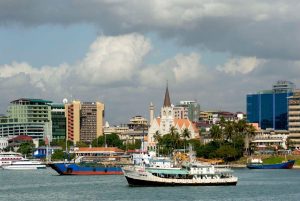Since the beginning of the year2020 Kenya has experienced an influx of Locusts in the Northern part of the country which borders Ethiopia and Somalia.
The Food &Agricultural Organization (FAO) arm of the United Nations did raise the red flag in July 2019 when the swarms were spotted in parts of Arabian Peninsula including Saudi Arabia and Oman then followed Eritrea and neighboring Ethiopia.
The desert locusts feed on vegetation posing no danger to human beings. The main effect is that they eat the pasture and invade farms. When they invade pasture it affects both domestic and wild animals with reduced pasture. The Kenyan government and African
Union, which is equivalent of European Union are pulling effort towards eradication of the swarms at early stages of egg incubation.
How does it affect Tourism & Travelling? One reassurance we have been given is that the said pesticide that is used is not harmful to humans or any other mammals hence does not pose any danger. In many places they are doing localized spraying on ground as opposed to aerial spraying. The localized ground spraying is targeting the places where the locusts have laid their eggs for incubation and the aim is to stop them from hatching.
We wish to also clarify that the said locusts invasion is not anywhere near our major tourist circuit areas of Masai Mara, Amboseli, lake Nakuru or Kenya Coast. Some swarms have been spotted in Samburu and parts of Laikipia but both national government and the county government are working round the clock to deal with the menace. We wish to confirm that these invasions have not affected the game drives, hence there is no reason for any agent or client to cancel their planned visit to Kenya. They equally do not pose any danger to flying since they are low flying insects.
Do locusts attack Humans? Locusts do not attack people or animals. There is also no evidence that suggests that locusts carry diseases that could harm human or any other mammals if anything it is considered a highly nutritious delicacy.
Finally the invasion seem to be turning North West back to South Sudan away from Kenya and hopefully it stays that away. The map below from FAO has captured the route of the swarms clearly.
We shall keep you posted in case of any new development. Please do not hesitate to get in touch with KTF Safety Security Centre for any clarification or concern.
Mohammed Hersi
Chairman
Kenya Tourism Federation
Our Source: Kenya Tourism Federation



